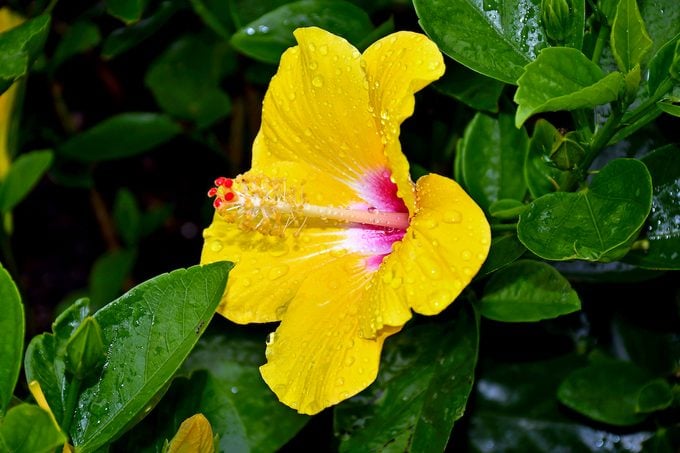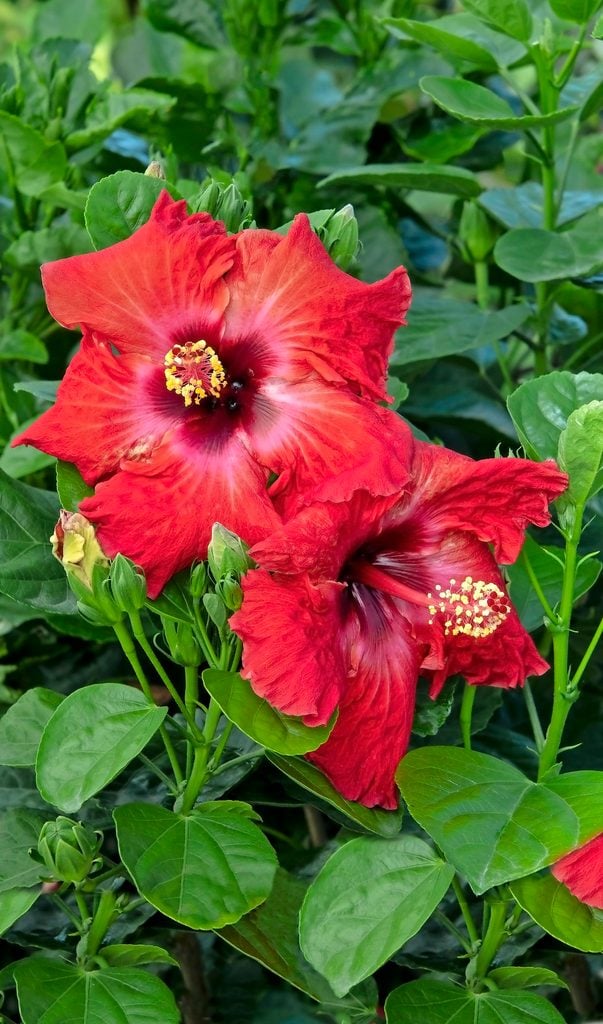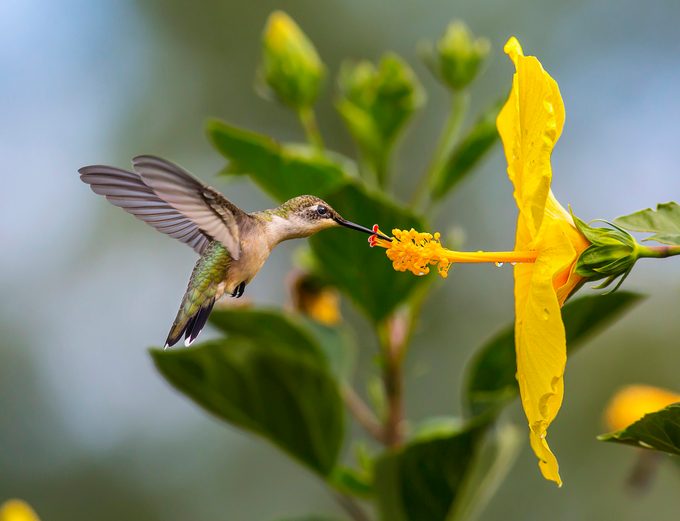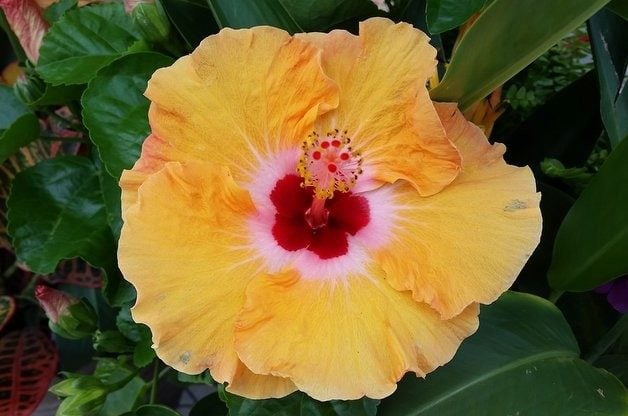Hibiscus Flower Care 101: Outdoors and Indoors
Updated: Feb. 22, 2023
The flowers of a tropical hibiscus shrub are showstoppers. Get expert tips for hibiscus care, both outdoors and as houseplants.
Our editors and experts handpick every product we feature. We may earn a commission from your purchases.

Some plants have tiny subtle flowers, so small and hidden you have to seek them out to enjoy them amidst the foliage. Hibiscus is not one of these plants. The flowers of hibiscus are big, brilliant, and show-stopping. They draw the eye (and hummingbirds) with large petals, fancy centers, and vibrant colors. There’s nothing subtle about hibiscus—and that’s probably why so many people love these flowers. Here’s what you need to know about hibiscus care, outdoors and indoors.
Check out the top 10 blooming houseplants to grow indoors.
Hibiscus Varieties

Hibiscus is part of the mallow family (Malvaceae). The genus Hibiscus is native to tropical and temperate regions around the world and contains several hundred species, including the popular rose of Sharon (Hibiscus syriacus).
But when most people think of hibiscus, they think of the many varieties of Hibiscus rosa-sinensis, grown in tropical regions around the world (though native to Asia). This hibiscus has been bred to a variety of cultivars with stunning colors and color blends, some with double flowers, and it seems that new varieties are always popping up to collect and grow.
Try the Jazzy Jewel Hibiscus series from Monrovia. Long-lasting blooms add a touch of the tropics to gardens in hot climates. Or if you live in a colder region, grow these frost-tender gems in a large pot on a patio. The huge red flowers on Jazzy Jewel Ruby lure hummingbirds in, and the sweet treat keeps them coming back for more. Butterflies may stop by these flowers, as well. Also look for Jazzy Jewel Opal, Gold and Amber.
- Jazzy Jewel Ruby Hibiscus
- Hibiscus rosa-sinensis
- Zones: 9 to 11
- Attracts: hummingbirds, bees, butterflies
- Light needs: Full sun
- Size: 4 to 5 feet tall and wide
- Grown for: Bright red, showy blooms that work well in homemade bouquets
- Foliage: Glossy green leaves
- Water needs: Water weekly or more often in extreme heat, or when grown in a container.
Hibiscus Care Outdoors

Give hibiscus as much sun as possible, and plenty of room to grow. In zones 9 to 11, hibiscus is fairly drought-tolerant once established, though it may not flower as often during dry spells. Plant it in well-draining soil and prune only once or twice per year. Hibiscus blooms on new growth, so don’t prune constantly or you’ll never see any flowers.
Outdoors, protect your hibiscus from a day or two of frost or freezes by covering with a sheet or frost cloth.
Learn when to prune hydrangeas for big, showy blooms.
Hibiscus Insect Pests
Hibiscus can be bothered occasionally by white fly or aphids. Remove these pests with a hard blast from your garden hose, or spray with an insecticidal oil.
Coppery green Japanese beetles also feed on hibiscus. Knock them into a can of soapy water or use a small hand-held vacuum to remove them.
Hibiscus Care Indoors

Hibiscus rosa-sinensis is a tropical plant and can’t tolerate freezing temperatures. That doesn’t mean that growing hibiscus is limited to folks in California and Florida, though. Hibiscus does very well planted in large pots that can be brought outdoors for the summer months, and then moved back inside when temperatures begin to fall. (Psst—here’s how to find your first and last frost dates).
Hibiscus is a shrub, and can get unwieldy in smaller spaces. Prune it as needed. If growing hibiscus indoors, fertilize once a month or so.
Don’t expect much in the way of flowers in the winter. However, these shrubs can produce blooms year-round with enough bright sunlight. The sight of a large hibiscus flower indoors when the ground outdoors is covered with snow is downright thrilling. Keep soil moist, but not wet, for best flowering.
Love flowering shrubs? See our Top 10 list!



















